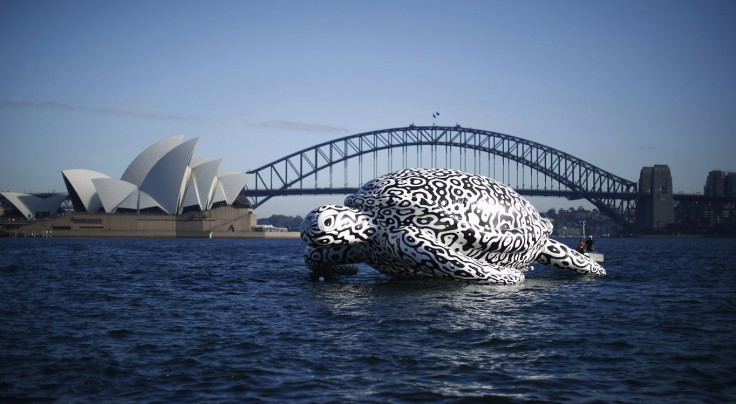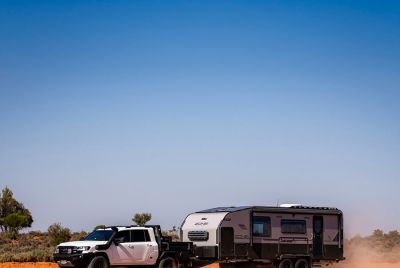15 things that make Australia unique

Australia is a world apart - both literally and figuratively speaking. It's a land beyond the ocean that is different from what other people might even imagine in ways they might even not think about. Australia might be the Western world's bastion in the Southern Hemisphere, with English as its official language, but its unique position on the map make it very different in aspects that go beyond politics and economy.
So, let's take a look at 15 reasons why Australia is so unique.
1. Marsupials
Back in the day, when all continents left the super land mass known as Pangaea, Australia literally took its own way. It didn't maintain a connection with the rest of the continents, which resulted in its retaining a different fauna. Today, it is the only continent with marsupials as the dominant mammal species, as opposed to placental animals inhabiting the rest of the world. Australia is home to more than 200 marsupial species, with almost no native placental animals to be found here.
2. Unique animals
We've taken a look at the Australian fauna as a whole -- now let's look at individual animals you won't find anywhere else, like kangaroos and koalas, among others. These are the best-known, but not the only unique species living here, though. One famous animal that has been featured in countless Looney Tunes episodes also dwells in these lands, known as the Tasmanian Devil (you may know him (it?) by his screen name of Taz-Mania).
3. Unique plant life
Australia is home to a number of plant species that are close to being unique in the world. Perhaps the best known of them is Eucalyptus, a species endemic to these lands. Out of the over 700 species known today, only 12 live outside Australia. Gum trees (eucalypts) are not only an important source of timber, firewood, and essential oils for men, but they are the only thing Koalas eat.
4. Population
For such a large surface, Australia has a surprisingly small population. The country is home to over 23 million people (2013), which makes it the second least densely populated continents of the world (the first place goes to Antarctica. About 80 percent of the country's population is concentrated around its coastal areas, especially in the South East.
5. Gambling
One of the most controversial laws in effect in the country is the IGA (the Interactive Gambling Law of 2001). It states that the only form of interactive gambling available to locals is sports betting over the Internet, but only pre-game. I-game betting, a popular form of the activity, is prohibited (except by phone). It also bans companies like the Royal Vegas Australia to offer their services to locals. This doesn't stop Aussie pokie fans from visiting the Royal Vegas and playing their favourite games there. It is not a surprise, though, since the Royal Vegas has enough games to keep them entertained, even if customers are driving through the Outback.
6. Dangers
For an outsider, Australia might seem to be one of the most dangerous lands ever discovered. It is home to amphibians (the saltwater crocodile), mammals (the Tasmanian devil), insects (the Sydney funnel web), snakes (the Easter brown snake) and sea creatures (like the box jellyfish and the blue ring octopus) that are out to kill you.
7. The Stinging Bush
This one is so weird that it deserves a separate title. The Gympie-Gympie plant, AKA the Stinging Bush, or Dendrocnide moroides, is perhaps the most dangerous tree ever. Its leaves are covered with stinging hairs that deliver a potent neurotoxin, which cause agonising pain for days, with effects that return up to two years. Surprising as it may sound, its fruit is edible, once all the toxic stings are removed.
8. Laws
While there are many weird laws in the world, this one has to be unique: In some Australian states, it's illegal to leave your keys in your car and the engine running if you are at least three metres away from it. Even if you just pop into the shop to buy a carton of milk.
9. Batman?
Batman is not only the name of Gotham's dark knight but also the name of a real-life explorer who founded the city of Melbourne. Initially, he declared the land as being called Batmania -- it would've been an interesting name for Australia's second largest city, right?
10. History
Speaking of history: Did you know that Australia was first intended to be used as a penal colony by the Brits? The first Australian penal colony was established by the British crown in 1788, with over 50,000 criminals transported to the remote continent in the next 60 years.
11. Rabbits
Australia, as we showed above, was a land ruled by marsupials -- until 1859 when the first rabbit set foot on its soil. It was Thomas Austin who released the first rabbits in the wild, which has been a really bad idea. In just 10 years, the number of these innocent little fluffy creatures grew to 2 million, leading to serious loss of plant species, and massive erosion of the land.
12. Cattle
Anna Creek Station is the largest cattle farm in the world. With an area of roughly 6 million acres, it is larger than some countries. In a good season, the farm is home to tens of thousands of cattle.
13. The second longest highway
Highway 1 is the second longest national highway of the world. It's 9,000 miles long and it connects all the state capitals of the Australian mainland. It is used by more than 1 million people each and every day.
14. Islands
The Land of 1000 Islands? A piece of cake! Australia is surrounded by over 8,000 islands, with Mainland Tasmania, Melville Island, Kangaroo Island, and King Island being the largest of them all.
15. Coastline
Australia is a country with over 1,000 beaches, and they seem very attractive, too -- especially since the interior of the continent is mostly composed of arid lands. This might be the reason why over 80 percent of the locals live near the continent's coastline.





















